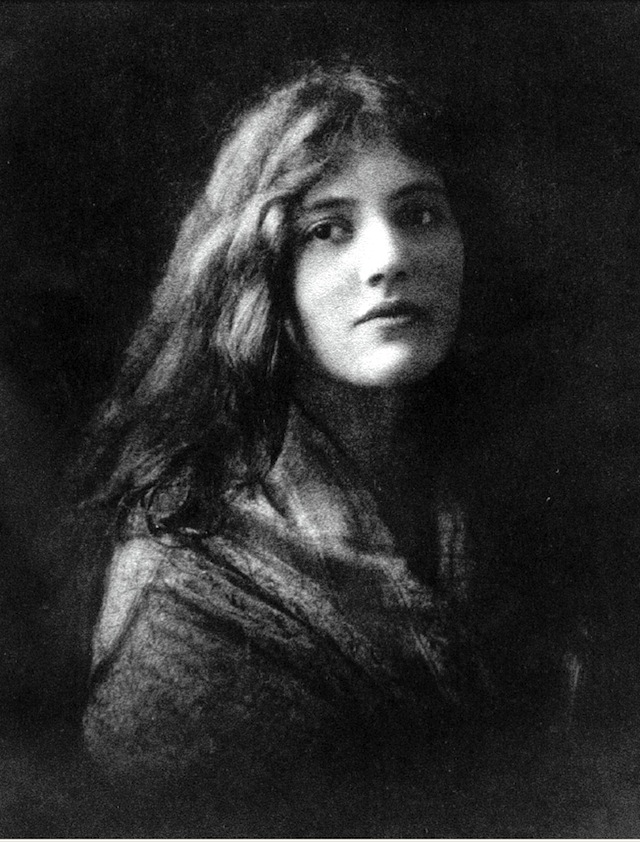
Iseult Gonne
I wrote last time about first hearing of the strange love triangle between WB Yeats, Maud Gonne and her daughter, Iseult.
Iseult is less well known than her mother though her life story is equally dramatic, in a different sort of way. Born on August 6, 1894, she was the only surviving child from Maud's thirteen-year affair with a married
French politician and journalist, Lucien Millevoye.
She lived with Maud who passed her off, variously, as her niece, her cousin, or as “a charming child I adopted”. But she did know Lucien and he acknowledged her as his daughter, if not publicly.
It was an inauspicious start to life and Iseult struggled with issues of identity and self-worth always.
Most of my novels begin with a question. Here, the question was: how could Yeats, who had carved a poetic career from writing about his unrequited love for Maud find himself, some years on, proposing marriage to his muse's daughter? To a girl almost 30 years his junior, and one to whom he had long acted in locus parentis?
Other extraordinary connections between these three characters include:
- In 1890, Maud Gonne had a son with Lucien Millevoye, who died of meningitis. Yeats and his mystical friend AE had convinced Maud it would be possible to reincarnate a dead person by having ritual sex in their tomb. So she on Hallowe'en night 1893, she brought
Lucien down into the vault under Georges memorial chapel, for a little sex magic. The ensuing child, she always claimed, was Iseult. - In 1903, Maud married John MacBride, an Irish nationalist who had forced the English in the Boer war in Africa. Iseult detested him on sight and together with his mother and most of their friends (except the Irish nationalist activists, who thought it a good thing for their movement), begged her not to. Yeats too implored her not to do it, seeing it as the most bitter betrayal of their life and work together.
- Maud's marriage to MacBride ended in a very publicly contested separation in 1905 and in her petition for divorce, Maud charged him with intemperance and cruelty and worse — sexually threatening behaviour to Iseult. For years afterwards, she had nightmares and her relationship with her later husband was affected by this childhood experience. Yeats supported Maud and Iseult through the stresses of the trial and resulting publicity.
- Iseult developed a childhood crush on Yeats, which he kept secret from her mother. At the age of fourteen she asked him to marry her. He refused because, he said, she had “too much Mars in her horoscope”.
And so it goes, on and on, through one emotional twist after another, through the long awaited consummation of Maud and Willie's relationship, through MacBride's execution for his part in the 1916 Rising in Dublin, through Yeats's flirtation with, and ultimate proposal to Iseult… and beyond.
Their lives were every bit as dramatic and as meaningful as their work and tell a most unexpected story about love, a story that became irresistible to me and turned out to have an unexpected twist in the end.
Of course, the verse the two women inspired is the most important connection of all. Here is the opening of The Only Jealousy of Emer, a summation of Yeats's mature assessment of the delicate, vulnerable wonder that is female beauty. The poem was inspired by Iseult and she and Maud are both there and so too, for me, is the towering presence in his life that Yeats never mentions directly: his own mother.
A woman’s beauty is like a white
Frail bird, like a white sea-bird alone
At daybreak after a stormy night
Between two furrows upon the ploughed land.
A sudden storm, and it was thrown
Between dark furrows upon the ploughed land.
How many centuries spent
The sedentary soul
In toils of measurement
Beyond eagle or mole,
Beyond hearing or seeing,
Or Archimedes’ guess,
To raise into being
That loveliness.
Tomorrow: WB Yeats Poems Inspired By Maud Gonne